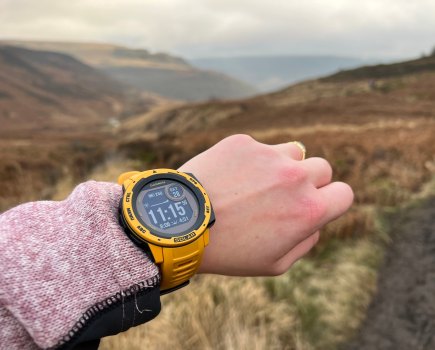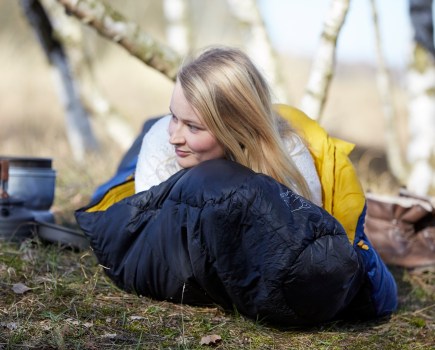More letters on the subject of trekking poles
A letter recently published in The Great Outdoors queried whether the use of trekking poles put potentially detrimental stress on the users’ wrists. With only limited space in the magazine for our readers’ responses, we are publishing more here.
In search of scientific evidence
I have never heard that trekking poles take 15% of the weight off one’s knees ( TGO March 2018 – letter to the Editor, Mt Andy Hosking) . This would seem to be illogical, and where does the weight of the pole go when lifted off the ground? I have only heard that they ease the strain on one’s knees by 15-20%. But is this myth or industry hype? I have been unable to find any scientific evidence to support this claim.
It seems reasonable, though, to assume that poles do take some strain off the knees and possibly off the hips. Although unnoticeable when walking unladen on a flat surface, we do sway from side to side. Unnoticeable because the sway is offset or evened out, by the knees, but walk with a heavy pack or on rough ground and the sway is noticeable. Poles alleviate this sideways sway, thus easing the strain on knees. But to be effective one should always use two poles.
I have been walking, mountaineering and packwalking all my life (am now 76 and haven’t yet stopped) and it is only in the last 8 years that I have taken to using poles as knee insurance, but I am not wholly convinced. For me, they come into their own on relatively easy ground such as grassy fields when I am walking fast and carrying a heavy pack. Then they noticeably alleviate the sideways sway and obviously take strain off the knees. I have found that they make little difference when walking without a pack or with only a light day pack because in these conditions the amount of sideways sway is unnoticeable or only minimal. Man has always walked and has not needed poles!
I don’t use them off track, when they get in the way of scrub. I find them a hindrance on steps: they slow me down when both ascending and descending and do nothing to alleviate the knee-jarring on descents. On rough ground or on steep and rough slopes they slow me down and can be dangerous. They slow me down because one has to take time to place them carefully. I think they can be dangerous because they can slip when one is depending on them or if one falls they can get in the way and perhaps cause a worse fall and greater injury than without them. I never put my hands through the straps as, if I fall, I want to be free from them. I have no doubt that on rough ground and steep rough and perhaps loose slopes I can move quicker and more safely without them, depending on balance and good footwork. I am also sure that dependence on poles destroys one’s balance and agility, both so important in moving quickly and safely.
Barrie Ridgway, Australia
One pole, not two!
Following on from Andy Hosking’s interesting letter in the March issue of TGO on the subject of trekking poles it is a topic of debate I’ve had from time to time with friends and a cause for some self-analysis.
The utilisation of poles for trekking and general mountain walking has grown in popularity over quite a number of years now, possibly as a result of their recommendation and promotion by the likes of Hamish Brown and Chris Townsend – respected authorities both.
Until I reached my 70s and 80s with a lifetime of outdoor activity behind me, I held a genuine belief that poles were no more than an inconvenient encumbrance and furthermore, I was of the opinion that by the nature of their purpose, they act in a negative way to erode one’s natural sense of balance.
With the imminent approach of my 82nd birthday, I do find that they perform a reassuring service in some circumstances, but do not advocate the use of two poles. A controversial statement that might provoke discussion?
My point is that one pole can be readily shared and alternated between left and right limbs, allowing a free arm and hand to cope with other tasks or an unexpected situation or emergency, by far the best compromise, dare I say.
Mike Gibbons, Skipton
Pacer Poles
Ref: Andy Hosking’s letter in the March edition of TGO. Whilst his friend is probably right in that the weight must go somewhere…
Could the wrist pain be simply due to the angle at which the wrists are held when using normal trekking poles?
Compare this to the natural flat angle of using Pacer Poles, where the strain is taken by the forearm linked to the biceps, the wrist is horizontal and relaxed rather than in tension…
Just a thought from a long-time Pacer Pole user.
Dermot Maxwell, Tonbridge
Another advocate for Pacer Poles
I was interested in the letter from Andy Hosking (March 2018) in which he complains of painful wrists after using trekking poles. I have used poles for 30 years and a few years ago developed painful wrists and lower back pain after long walks. I read one of your comparisons of trekking poles in a previous TGO magazine and decided to try Pacer Poles. These have shaped handles for left and right hands and are bent so the wrists are kept straight while using them. I have now used them for the past two years and now have no problems with my wrists or back. The poles come with full instructions on how to use them.
Ewing Forrester, St Andrews
TGO Challenge
I have used them for the last 30 years (initially with cut-down ski poles and then proper trekking poles) at first to maintain balance when solo backpacking on the TGO Challenge and long-distance solo routes. I later had to rely on them more having had a hip replacement.
I have never had any trouble with sore hands and feel that perhaps Andy has not been using the straps /wrist loops in the correct way or not relying on them to take the weight rather than merely grasping the handles too tightly.
It’s an interesting subject to discuss and to try and discover what causes his hand trouble.
Geoff Williams, Llandeilo
From Chamonix to Snowdonia
An interesting letter from Andy Hosking regarding the use of poles and wrist pain. I think a lot of the problems that occur to the ”I don’t like to use poles’’ group is down to the fact that they are using them incorrectly, I have used poles for a very long time, this came about after a trip to Chamonix in 1970 where I noticed all the Alpine guides used ski poles as walking aids – of course this and the fact that they were a lot fitter than us Brits helped. On returning to the UK and whilst working for Ellis Brigham in Liverpool I purchased a cheap pair of ski poles to use on the UK hills just to see if they made a difference; they did, but of course were a total pain as they were not collapsible. Fast forward a few years and the collapsible pole came about and this made them very usable but still people were reluctant to use them, was this down to British stubbornness to accept a new concept?
I have used poles now for over 30 years and don’t go on the hill without them. I’m 65 and as I live in Snowdonia I am lucky to be able to get on the tops two to three times a week, my knees are OK and I have never had wrist pain, so is this down to luck or correct use.
There is a very defined technique in using poles and when used in the correct manner should not cause wrist pain. On a flattish level path or a ridge then you will need to keep the shoulder, elbow, wrist at 90°. The important bit is, for steep ground they need to be adjusted accordingly, shorter length for uphill and longer length for downhill; I see a lot of walkers on my travels and it is very rarely that you see anybody adjust their poles during their trek, this is so easy with today’s modern ‘quick release’ adjusters that it can be done on ‘the move’. The other mistake often spotted is people not putting their wrists through the wrist loops correctly, again very easy, put your hand UP through the loop and grip the handle, when you put pressure on the pole then the weight it is taken up on the strap, exactly like a downhill skier would. Not using the straps means that you are constantly gripping the poles which will also cause pain.
A good example is the advert directly opposite Andy’s letter for the British Heart Foundation. The young lady has the correct 90° bend at the elbow while the other lady’s poles are too short, she will have to bend her wrist up and down constantly to get a ‘stride’ resulting in repetitive strain on the wrists while the young lady will only put her arms forward and no wrist movement. Watch a cross-country ski race; their wrists hardly move, it’s all in the arms.
I’m sure there will be many conflicting arguments on the subject but I hope my experience allays Andy’s fears and that with a slight change in technique he will relieve his wrist pain and keep on saving his knees for many years to come.
Ken Latham, Snowdonia
An abbreviated version of this letter was published in the latest issue of The Great Outdoors
Header image: © Alex Brylov / Shutterstock








